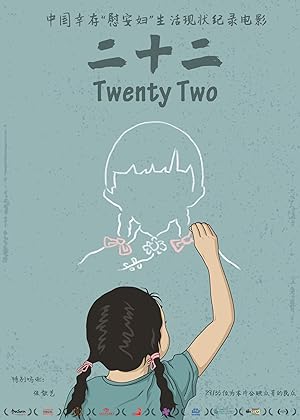Twenty Two’s description is like movie repellent. It is a documentary about sexual war crimes and old women. On an opening Friday in Boston, September 7, 2017, near Chinatown, there were two people, including me, at the second showing of Twenty Two in a major chain movie theater. There were three, including me, at a minor chain theater in Cambridge for Whose Streets? Twenty Two was in that theater for two weeks, which impressed me, so hopefully more people saw it than I think.
Twenty Two is the number of women still surviving at the time of filming. During WWII, Japanese invaders kidnapped and raped over 200,000 women and children in China. The occupying forces called them comfort women and treated them worse than prostitutes. When the documentary was finally released in 2017, only eight are still alive. The film sounds like it will be grim, filled with sober narration and never-ending recounts of horror.
Twenty Two is a shockingly relaxing film about the daily life of the survivors and those that interact with them. The movie is very respectful in its approach to the survivors and mainly consists of slice of life images of how the women live now or what the places where they were held look like today. Superficially there is no trace of the past horrors. Most of these women do not talk about what happened to them, but are simply shown at home with their families or with their friends. The movie depicts every survivor differently and probably let the women take the lead as to what she wanted to do while being filmed. Some women are indifferent to the camera and do not even speak. Some women do speak, but do not talk about what happened or explicitly say they won’t. Some joke around with the filmmakers or the advocates who visit with them.
Twenty Two is an unofficial testament to the different ways that people take care of the elderly in China. There is a tertiary portrait of their caretakers, usually daughters or other female relatives. Film usually captures what society deems as important so I appreciated that the film focused on these relationships and tiny moments that are usually taken for granted or are overlooked. My favorite scene involved a survivor and her daughter noticing a cat invading the premises, and they try to shoo it away. Shortly thereafter the film reveals how that worked out. Side note: they love their cats. This aspect of the movie is so lovely and understated that it probably is why I felt so calm and soothed despite the underlying premise of why the film was even being made.
There are a few who are willing to talk. One is a Korean woman who moved to China and already had a tragic life, but she does not go into details or cannot because age has blunted her ability to convey everything in a clear manner. Another was a revolutionary resistance fighter who was captured and bluntly addresses the issue, but also recounts how many Japanese she successfully killed. She is probably the most social and seems to be the unofficial mayor of her community as she holds court in her doorway. Another was a child so when she returned to her village, she was able to live a normal life and found love in an arranged marriage.
What was difficult to ascertain was how many of these women understandably did not want to talk by choice or still feared repercussions. Some women received accusations of being Japanese whores and faced tribulation during the Cultural Revolution because of this violently involuntary association. A number of the women expressed their adoration for Mao: genuine patriotism or an obligatory defense against a fear of persecution? The genuineness of this praise was lost in translation. The idea that elderly women still have to deal with reprisal for rape is ridiculous.
The majority of people who recount the details are the men who advocate for them in public and are not related to them, but have not succeeded in getting financial compensation from the Japanese government. They later express regret for disturbing the survivors’ peace for nothing. There was one young woman who volunteered, and I noticed that a man was staring at her harshly. I could not tell why, but later it was revealed that she was Japanese. Could he tell or would he have looked at any woman that way? It is strongly implied that it was the former, but I am not certain. The documentary did not provide other examples of young women walking to provide context.
Twenty Two is not only a memorial to these survivors, but it provides a welcome alternative blueprint to how we can approach difficult stories in a way that will not further wound them, reflect their humanity, harshly criticize the atrocity while not reducing their life to something horrific that happened to them. There are subtitles, but I would encourage everyone to see the film.
Stay In The Know
Join my mailing list to get updates about recent reviews, upcoming speaking engagements, and film news.





